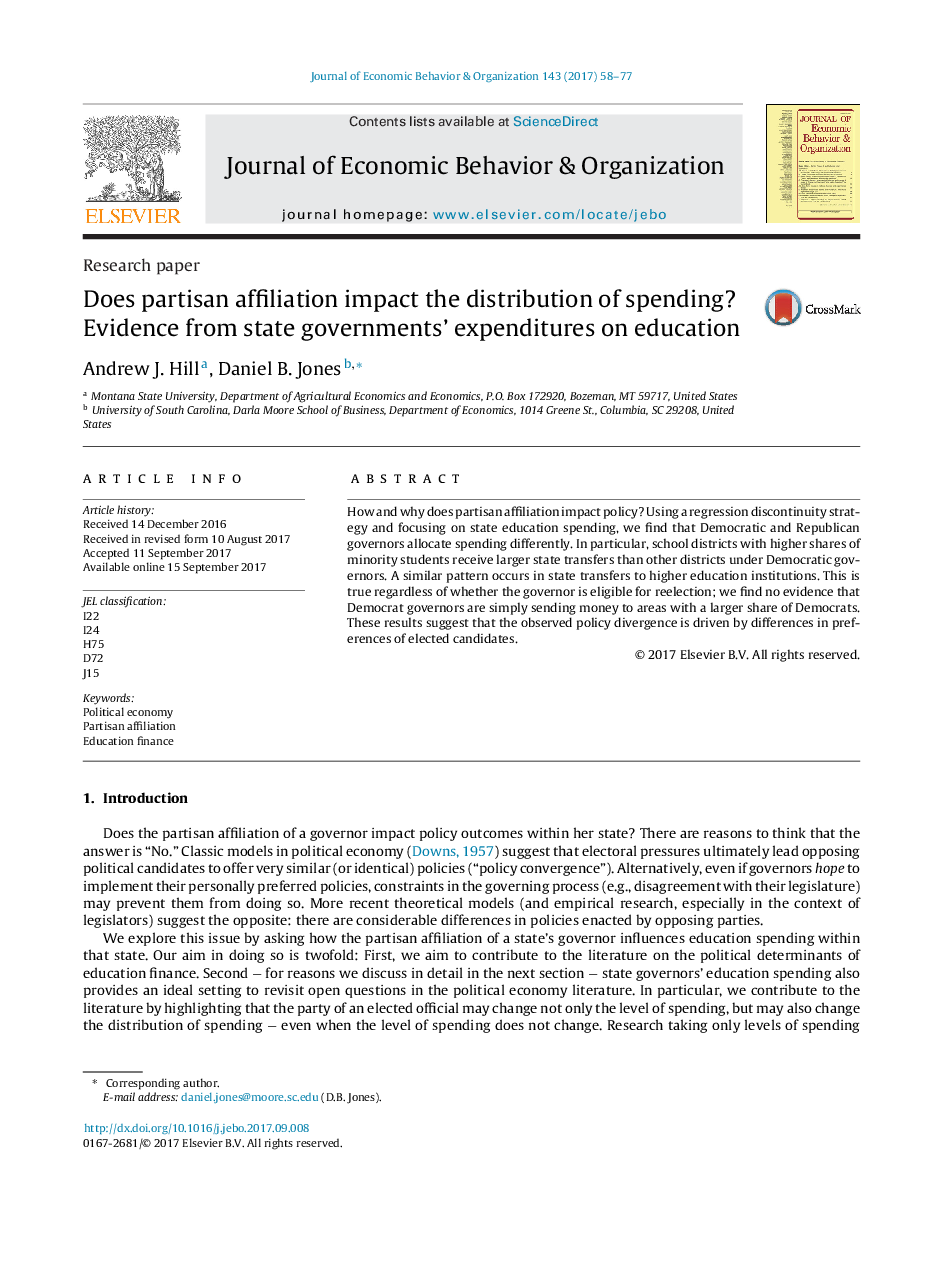| Article ID | Journal | Published Year | Pages | File Type |
|---|---|---|---|---|
| 5034413 | Journal of Economic Behavior & Organization | 2017 | 20 Pages |
â¢Existing work on impacts of partisan affiliation has led to mixed results.â¢Existing work often focuses on levels of spending.â¢We study the impact of partisan affiliation on the distribution of spending.â¢To do so, we draw on state-level education finance data from the US.â¢Party matters; Democrats shift funds to high-minority districts.
How and why does partisan affiliation impact policy? Using a regression discontinuity strategy and focusing on state education spending, we find that Democratic and Republican governors allocate spending differently. In particular, school districts with higher shares of minority students receive larger state transfers than other districts under Democratic governors. A similar pattern occurs in state transfers to higher education institutions. This is true regardless of whether the governor is eligible for reelection; we find no evidence that Democrat governors are simply sending money to areas with a larger share of Democrats. These results suggest that the observed policy divergence is driven by differences in preferences of elected candidates.
